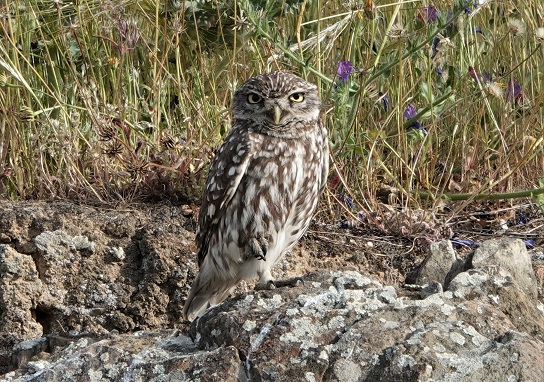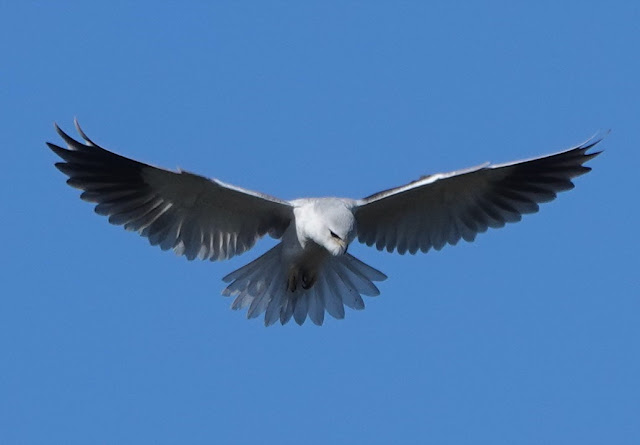A bee-eater with a difference
 |
| Blue-cheeked Bee-eater (Judd Hunt) |
It was the final full day of this year's tour and in the latter part of the week the weather had changed quite dramatically from hot and settled conditions to being cold and windy, with rain (although a huge respite from the devastating drought that we have suffered this spring). We normally take the group high into the edge of the Gredos Mountains on the last day, to look for Western Bonelli's Warblers singing in the deciduous Pyrennean oak and Ortolan Buntings returning to their territories on the moorlands of broom scrub above the tree-line. But with the forecast of low cloud, a fierce easterly wind and showers our plans were quickly changed.
We spent the morning on the plains west of Trujillo, having the best views so far of Great Spotted Cuckoo and enjoying once more the medley of larks, with some Pin-tailed Sandgrouse thrown in. Then, after our picnic, eaten in the shelter of our vehicles, I suggested that we headed south-east to visit a pool which earlier in the week had delighted us with its show of Collared Pratincoles. A few waders had been present which would also be interesting to look at again, just in case other species had arrived. Struggling against a head-on wind, a quick scan showed that the pratincoles had gone, but the variety of waders had been enriched with the presence of a Temminck's Stint, two Curlew Sandpipers, three Sanderling and a Spotted Redshank, amongst the couple of dozen of Little Stint and Dunlin already there.
It was now mid-afternoon and pleased with the selection of birds we had found, I considered how best to make use of our remaining time. As we had driven through the rice-growing area I had noticed that some of the fields were now flooded, announcing that moment in the rice-growing calendar when the the spring landscape of parched, dry bare-earth transforms to a vast wetland as the rice gets sown. It would be worthwhile driving through this area in case we found places where there may be more waders feeding. I decided to take a short-cut through an area of dehesa, along a dirt track which would take us onto the rice fields. That track I knew would give us some good opportunities to see and photograph birds such as Woodlark and potentially Turtle Dove.
As we turned onto the track, I led the way and after just a couple of hundred metres stopped to watch a small group of Bee-eaters that were coming to settle on the fence in front of us. The bad weather was forcing them to prolong their perching and make fewer foraging sallies for bees. We watched two in front of us, their heads facing the wind, making minor adjustments with the line of the bodies to ensure balance. As they flew off, I drove on to let Judd and his group take up position to enjoy them whilst we slowly continued along the track. The track rose and descended and I stopped to wait for Judd to arrive, as we could now longer see his vehicle. Suddenly my walkie-talkie crackled but the incoming message from Judd was inaudible. I replied "Can you repeat?". My mobile phone rang and I struggled to get it out of my pocket. It was Judd with what turned out to be a wonderful understatement "Hi Martin, I think I have a Blue-cheeked Bee-eater".
 |
| Blue-cheeked Bee-eater (Judd Hunt) |
 |
| Blue-cheeked Bee-eater (Martin Kelsey) |
We watched until the bird flew off, moving further into the dehesa with the other bee-eaters. There are perhaps a million Bee-eaters in Extremadura - no one really knows - and they can be found almost anywhere. What were the odds of finding the one group in the region to which this rarity had become attached? Pure serendipity to take that particular track, along which we did indeed have some splendid views of Turtle Dove, although we never did see Woodlark. That is birding.



Comments